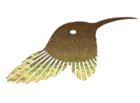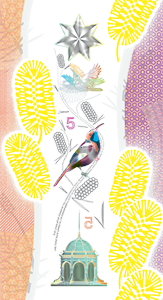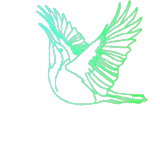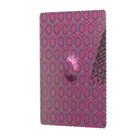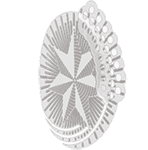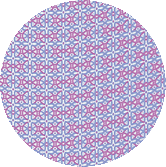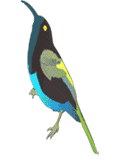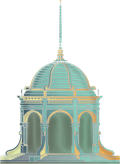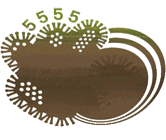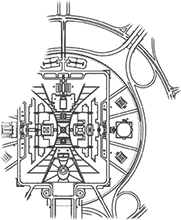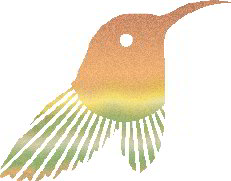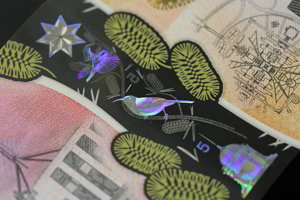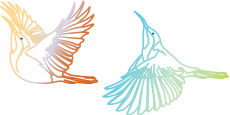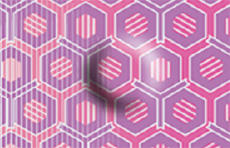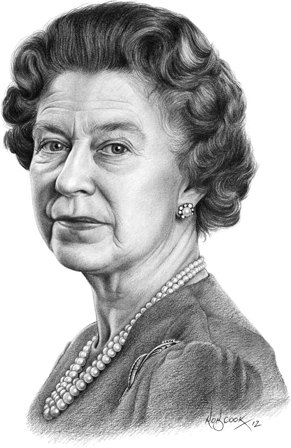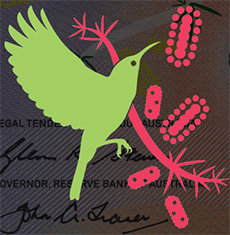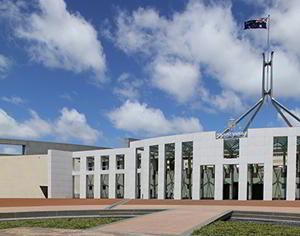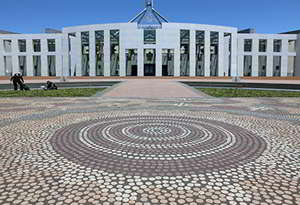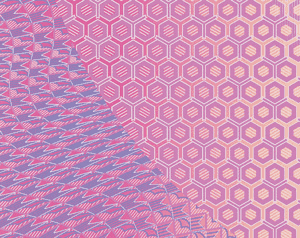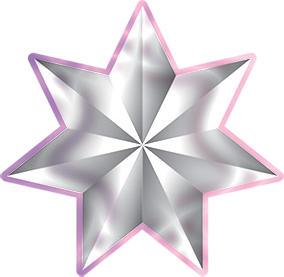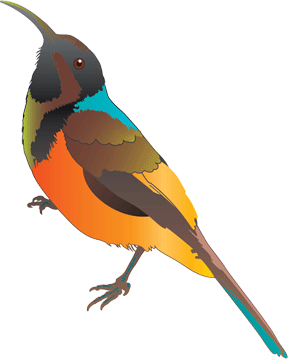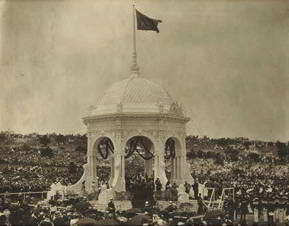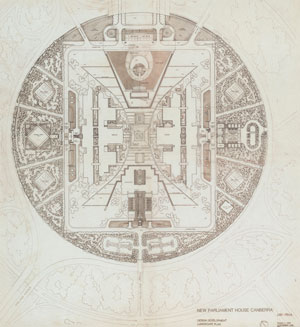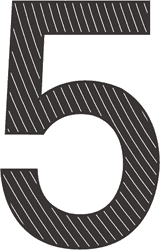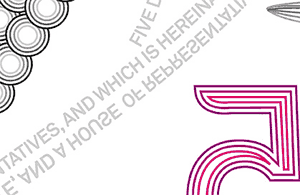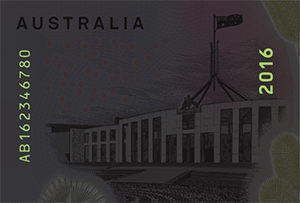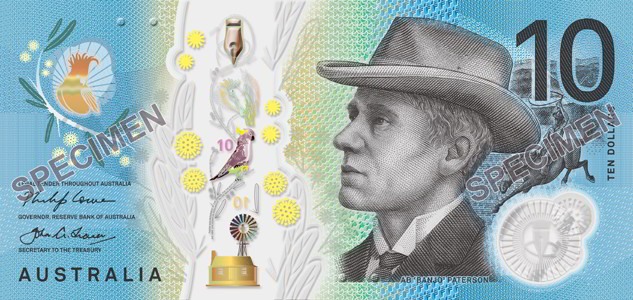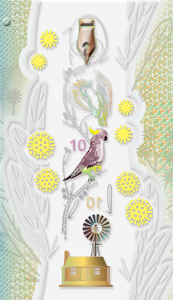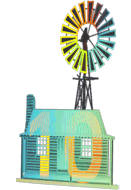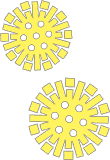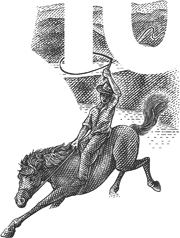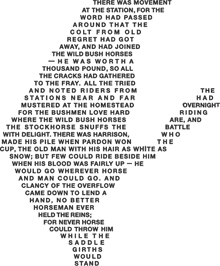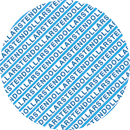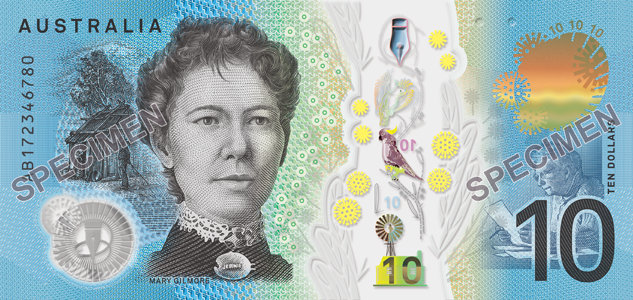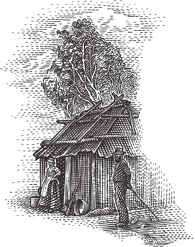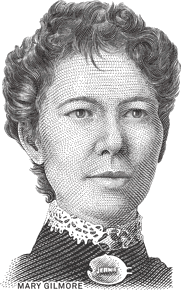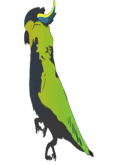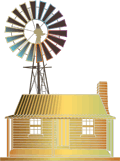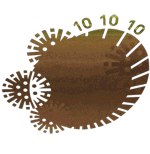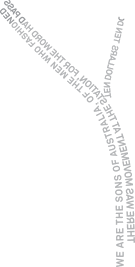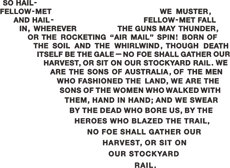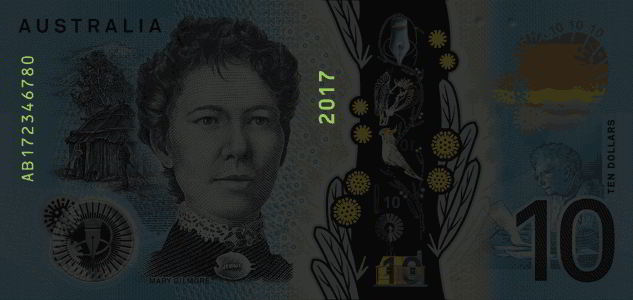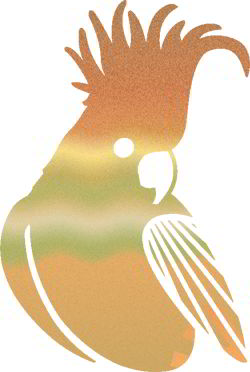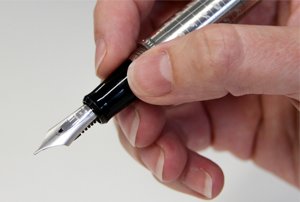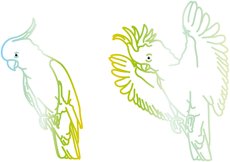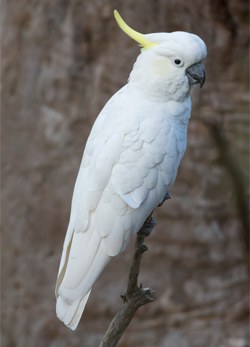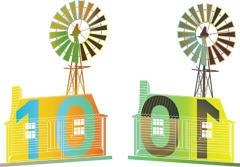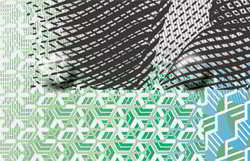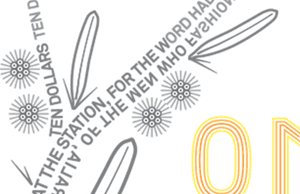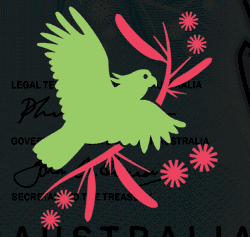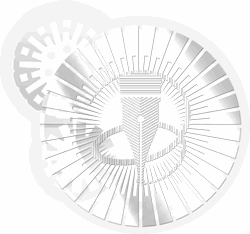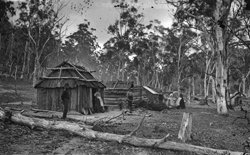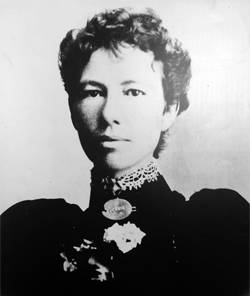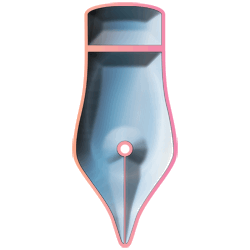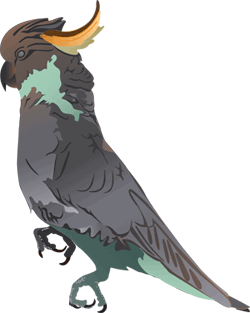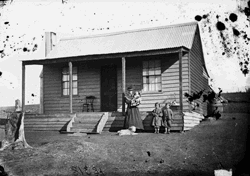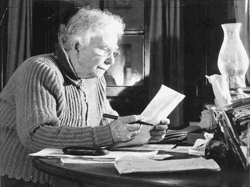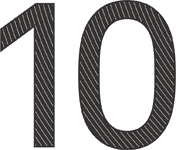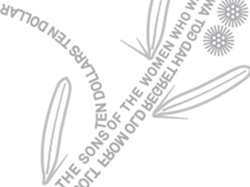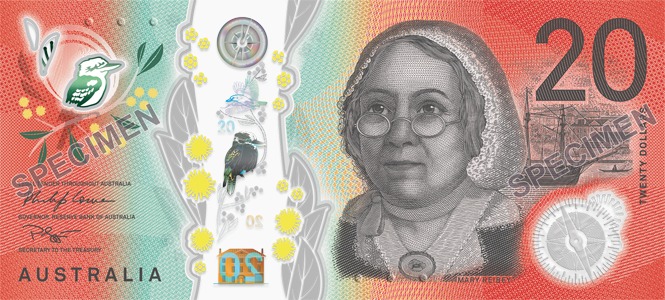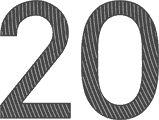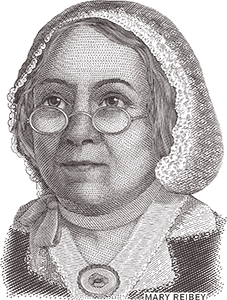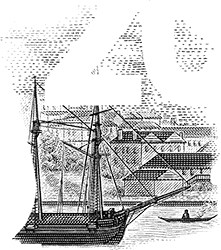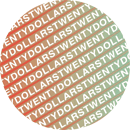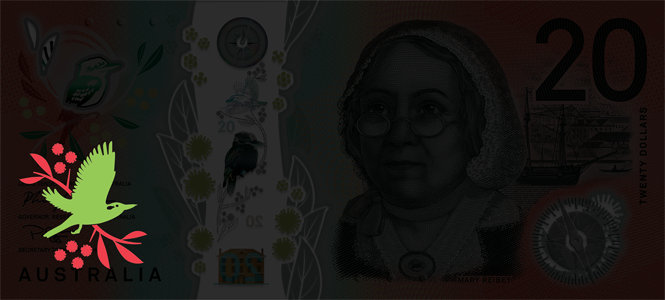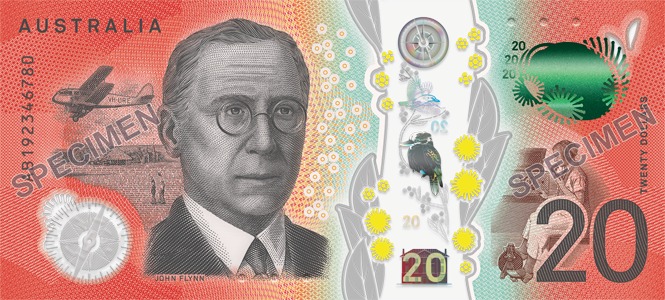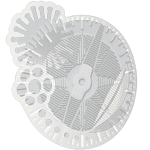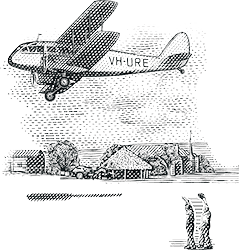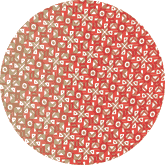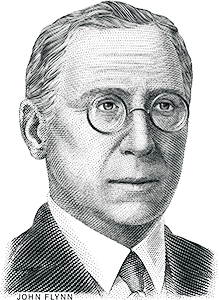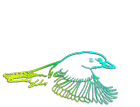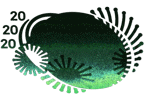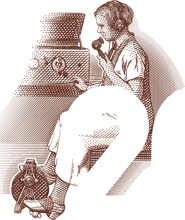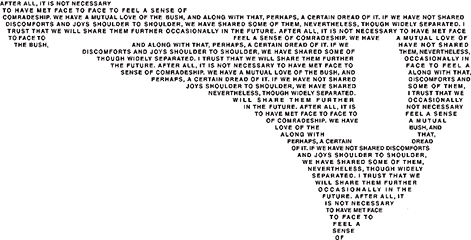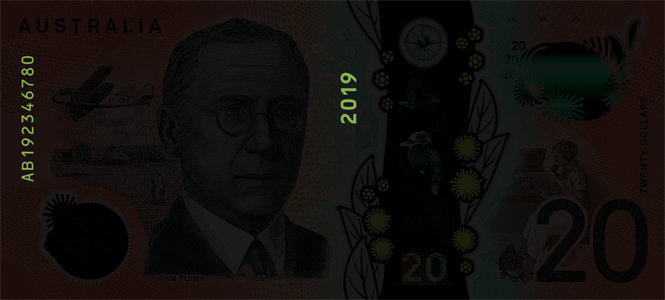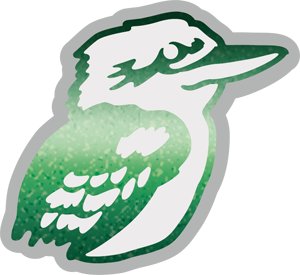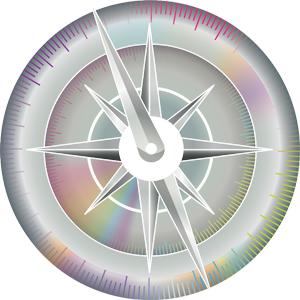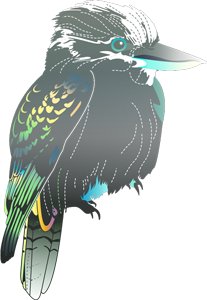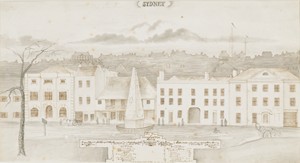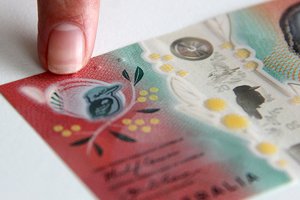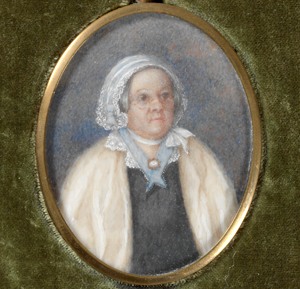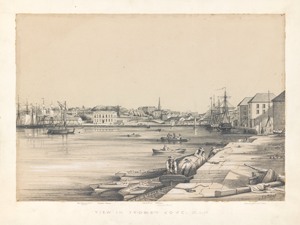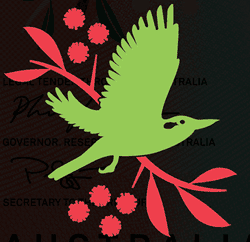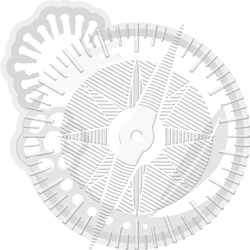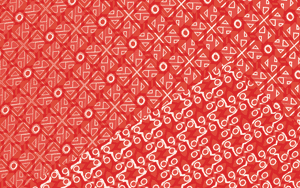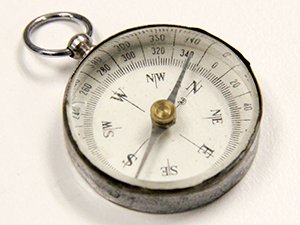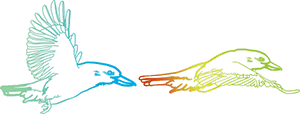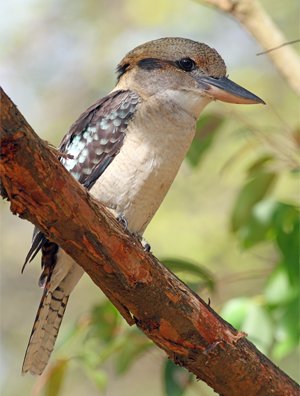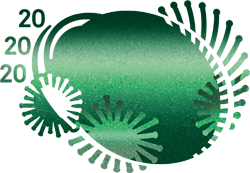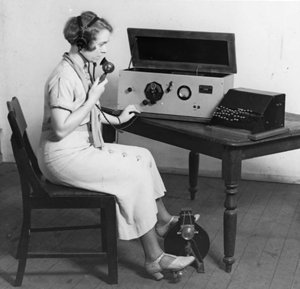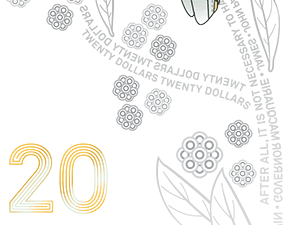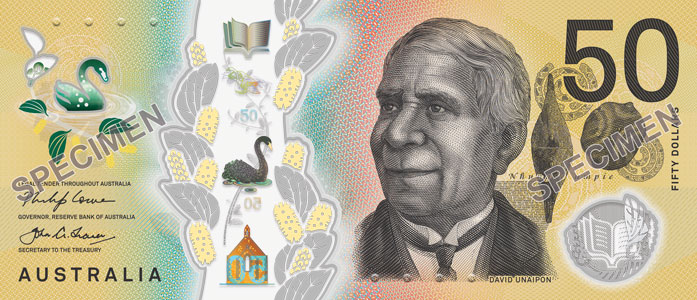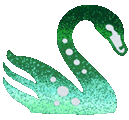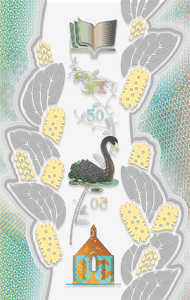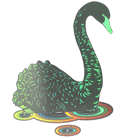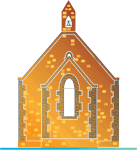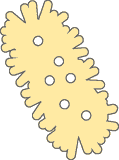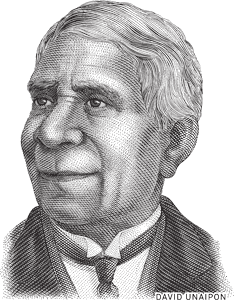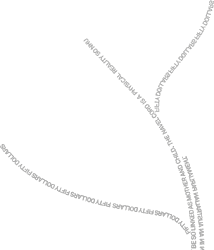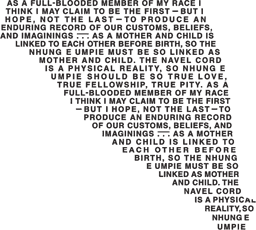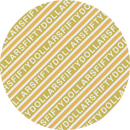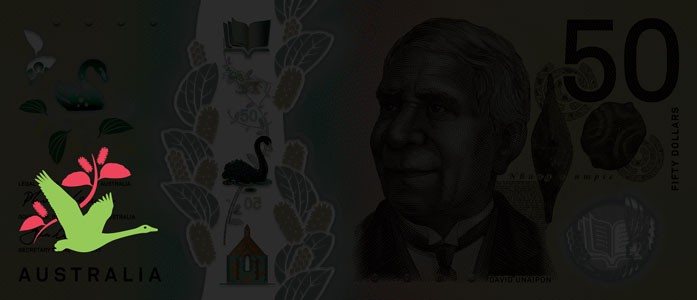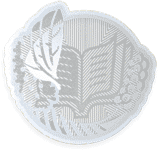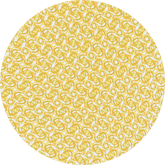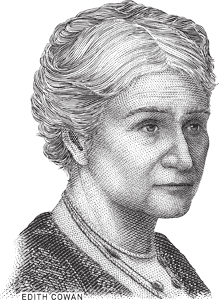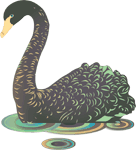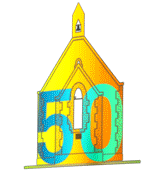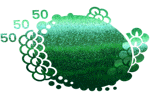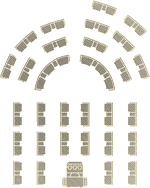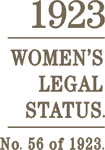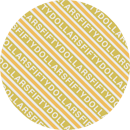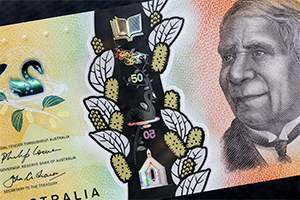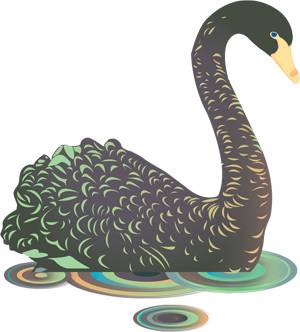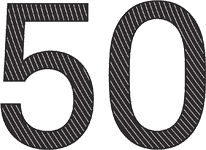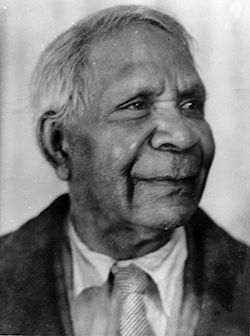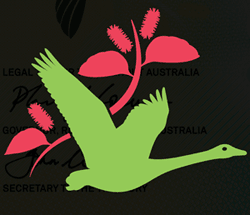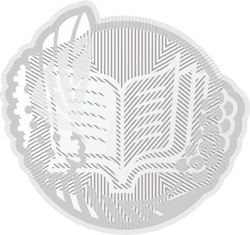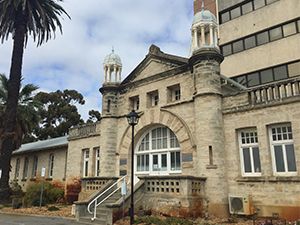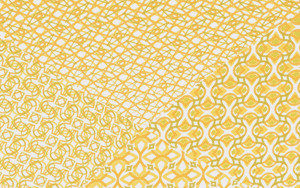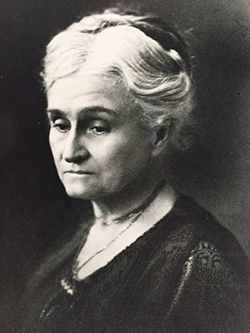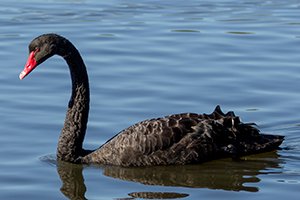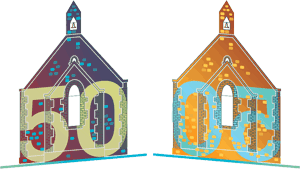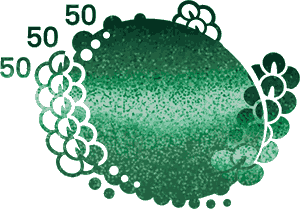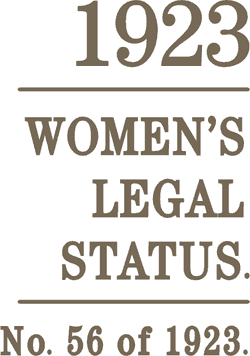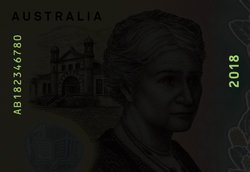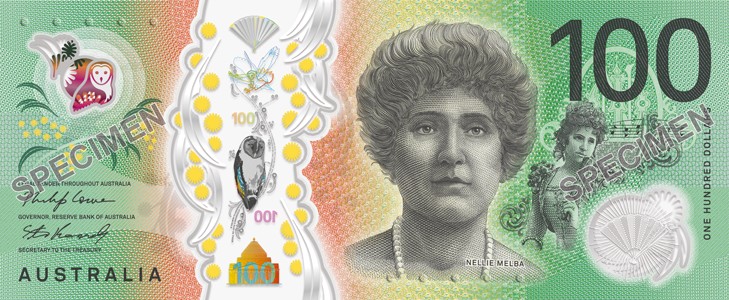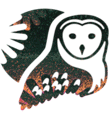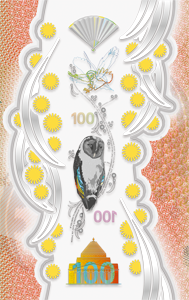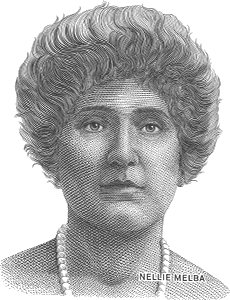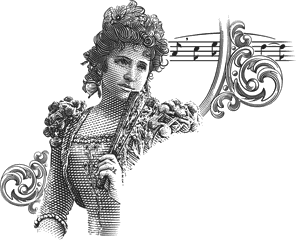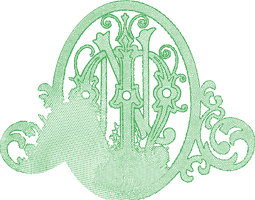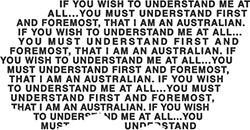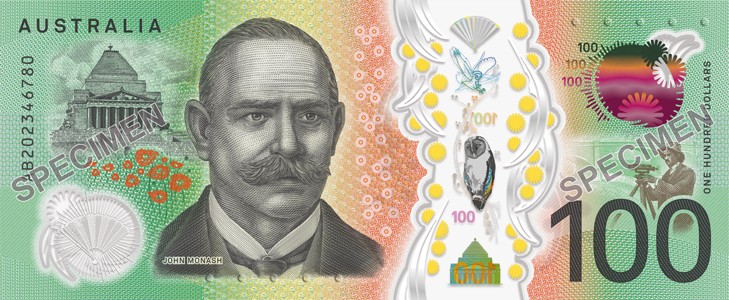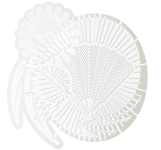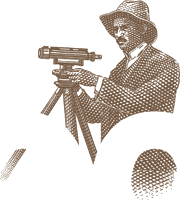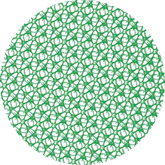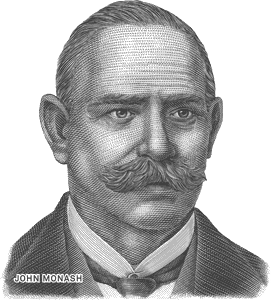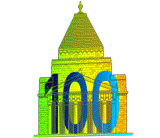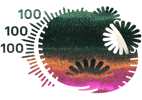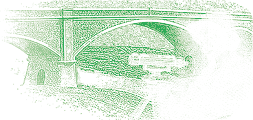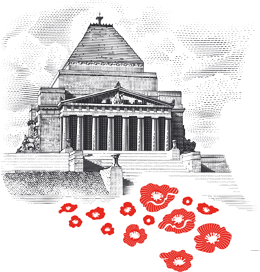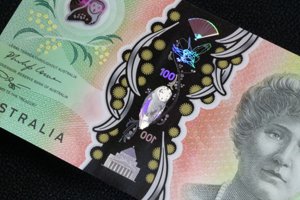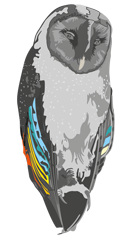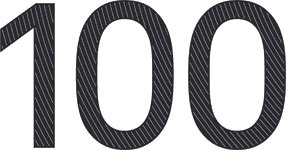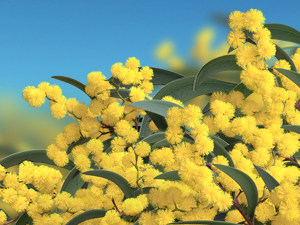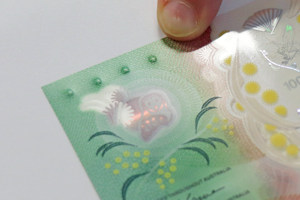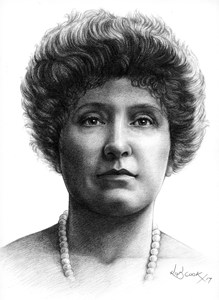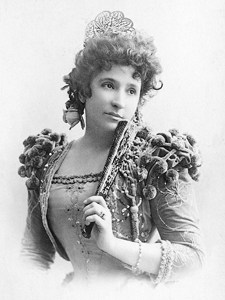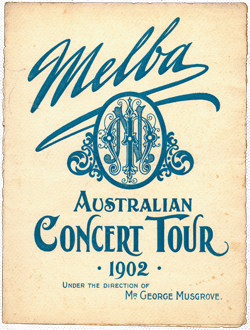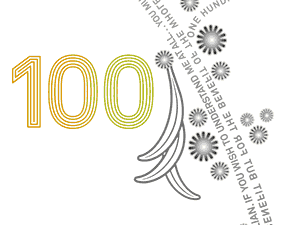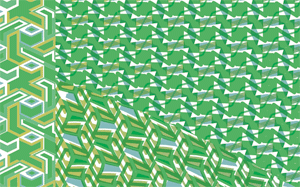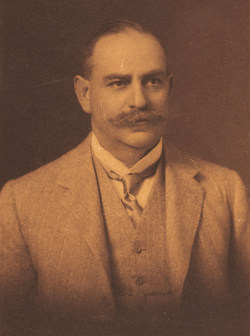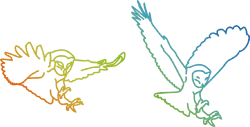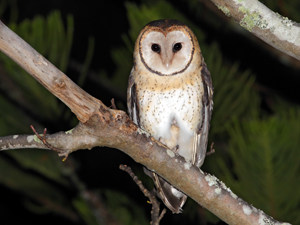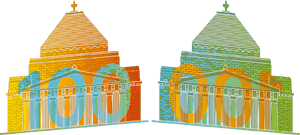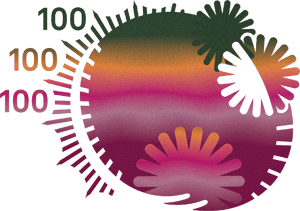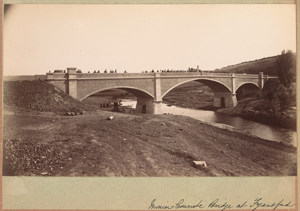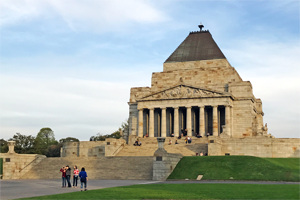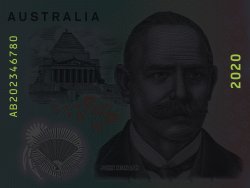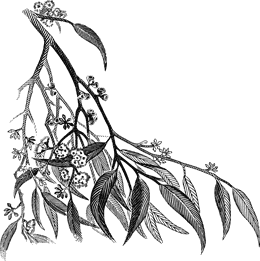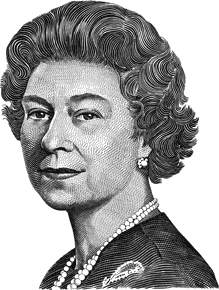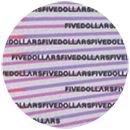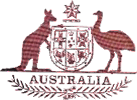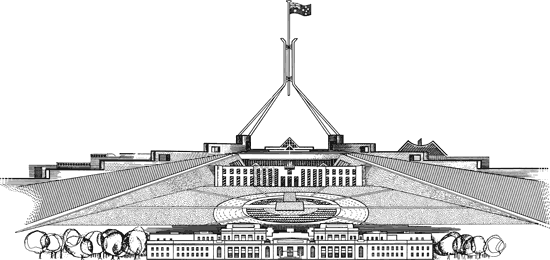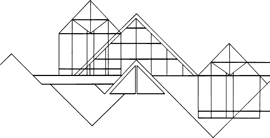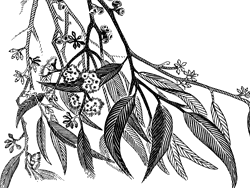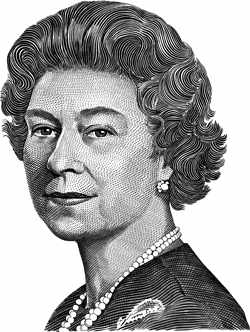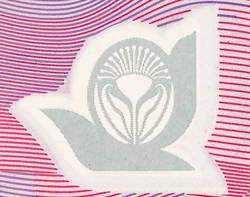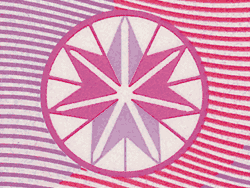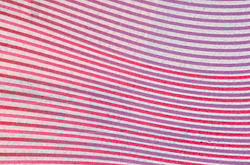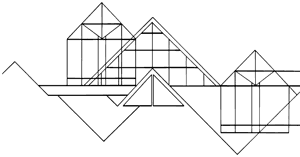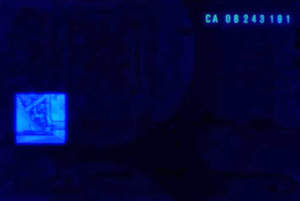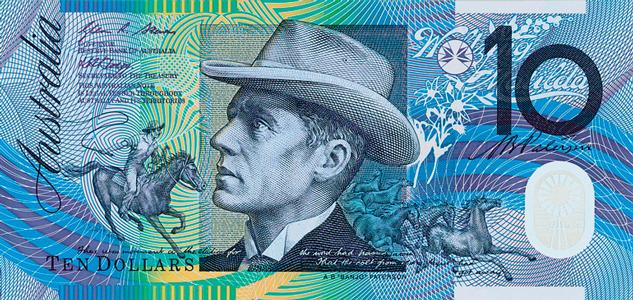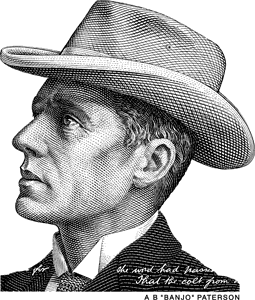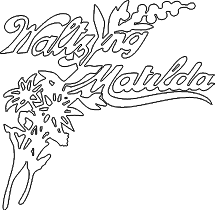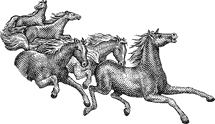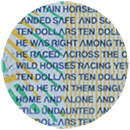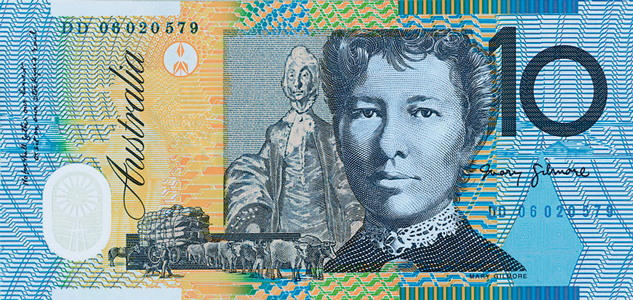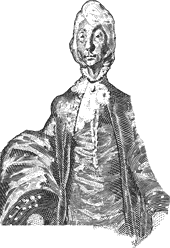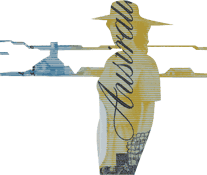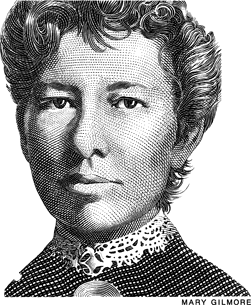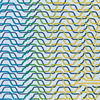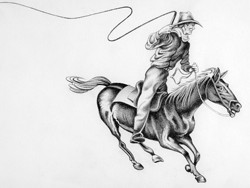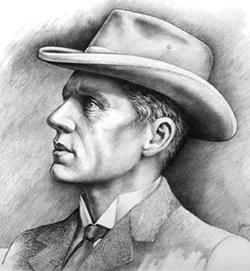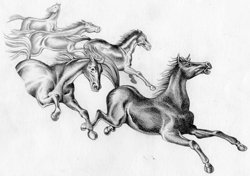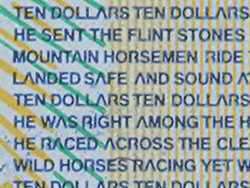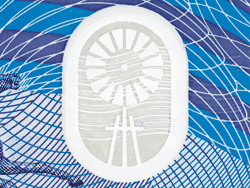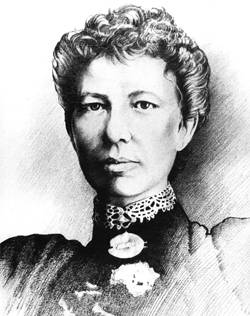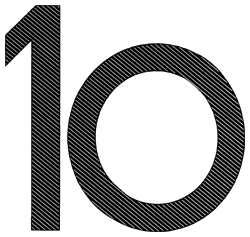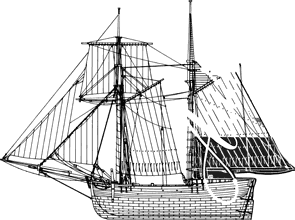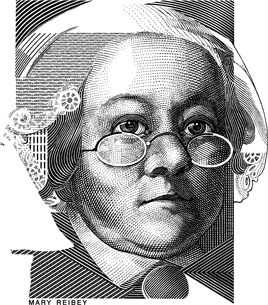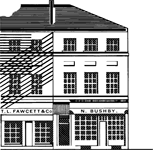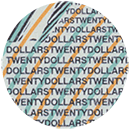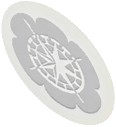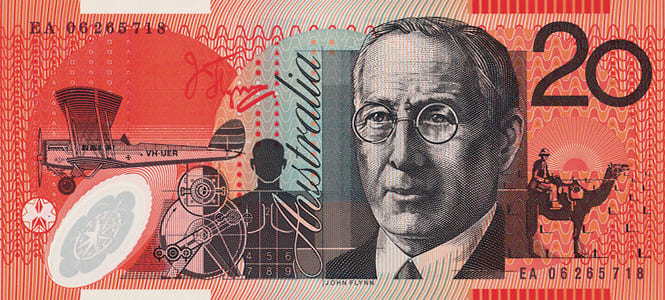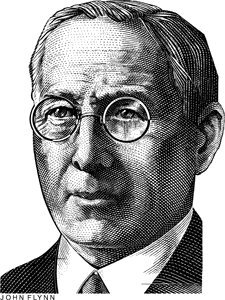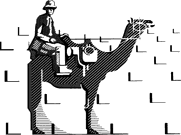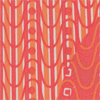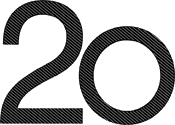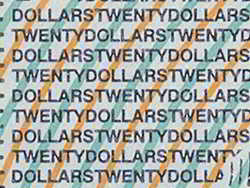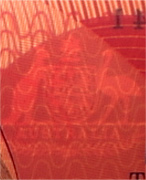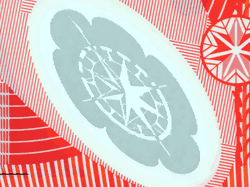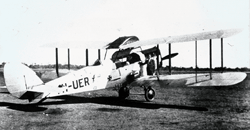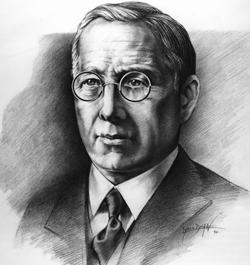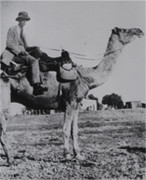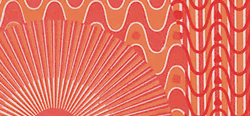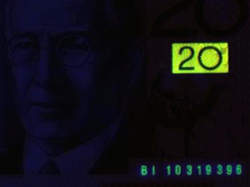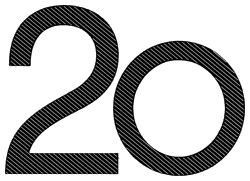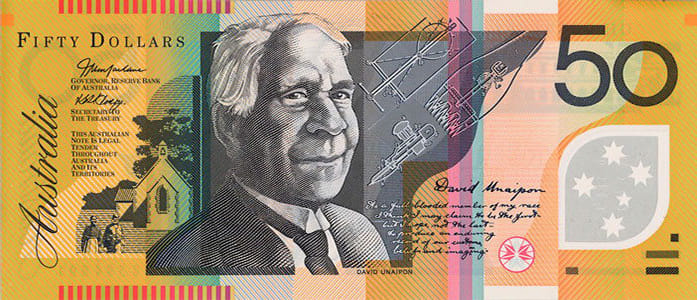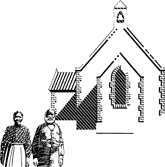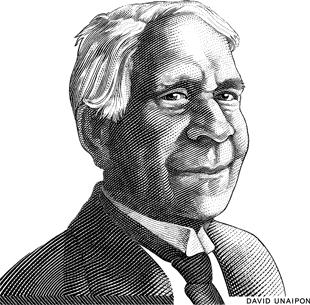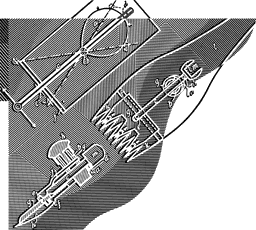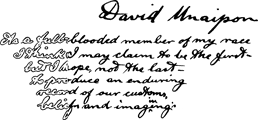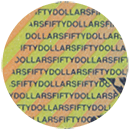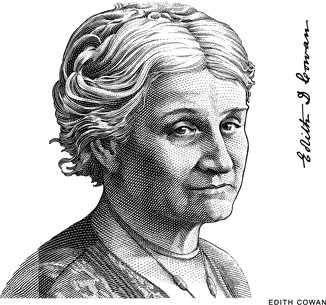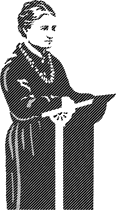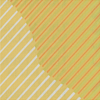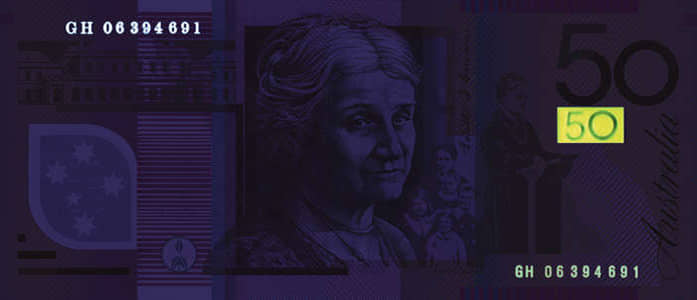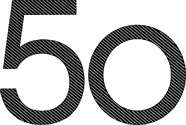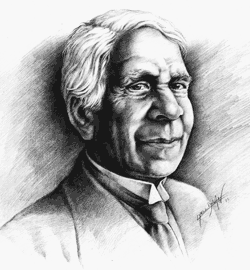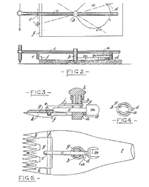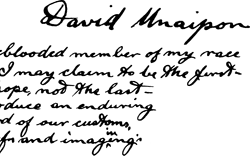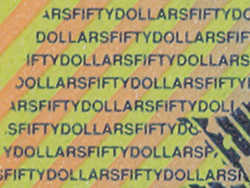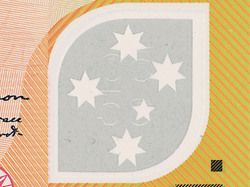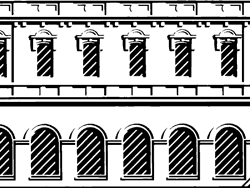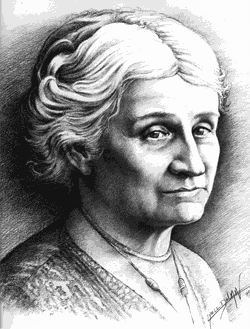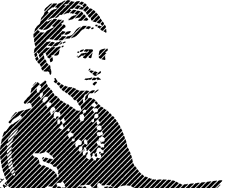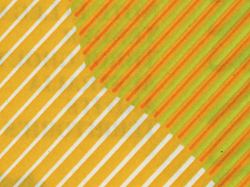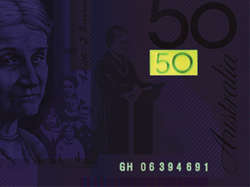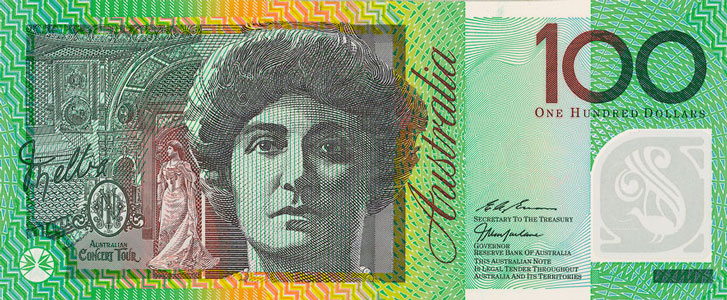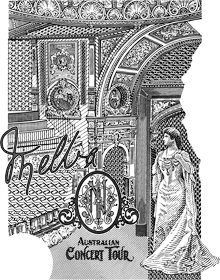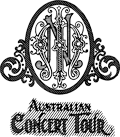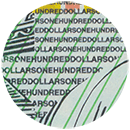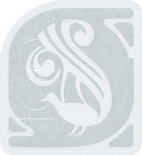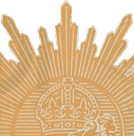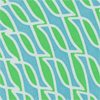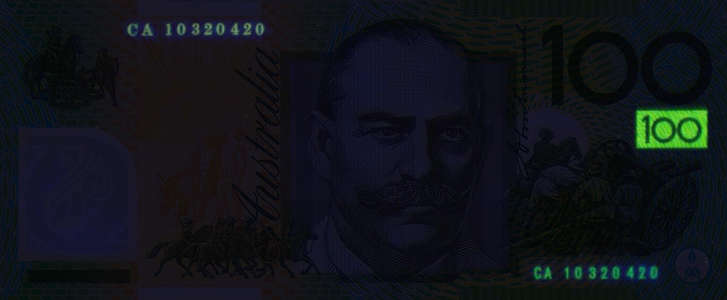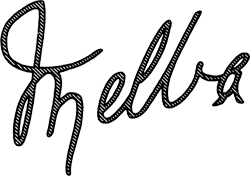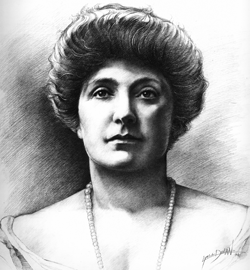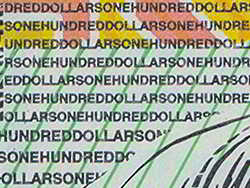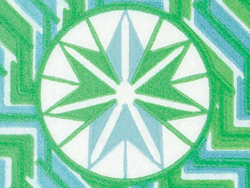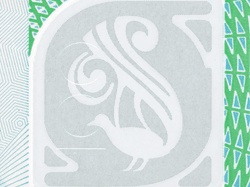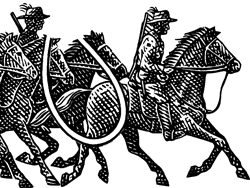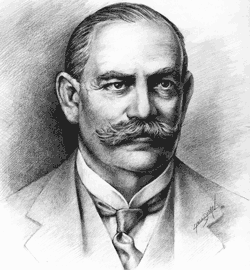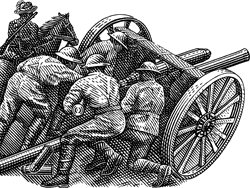Explore Banknote Features
New $5 Banknote
-
- Date of First Issue
- 1 September 2016
- Size
- 65mm by 130mm
- Concept Designer
- emerystudio
-
Security Feature Rolling colour effect

Tilt the banknote to see a rolling colour effect, which is visible on both sides of the banknote.
-
Security Feature Top to bottom window

Look for multiple security features in the clear top-to-bottom window.
-
Security Feature Flying Eastern Spinebill

Tilt the banknote to see the Eastern Spinebill move its wings and change colour.
-
Design Feature Eastern Spinebill

The banknote designer's interpretation of the bird species Eastern Spinebill (Acanthorhynchus tenuirostris).
-
Security Feature Reversing 5

Tilt the banknote to see the number ‘5’ change direction within the Federation Pavilion.
-
Design Feature Prickly Moses

The banknote designer's interpretation of the wattle species Prickly Moses (Acacia verticillata subsp. ovoidea).
-
Design Feature Tactile Feature

Feel for a raised bump on each of the long edges of the banknote.
-
Design Feature Portrait of Her Majesty Queen Elizabeth II

The Queen's portrait is based on photographs commissioned by the Reserve Bank in 1984.
-
Security Feature Federation Star

Look for a Federation Star in a small clear window.
-
Security Feature Fluorescent ink

Look for an Eastern Spinebill that fluoresces under UV light.
-
Design Feature New Parliament House

This depiction of the New Parliament House is the designer's interpretation of various photographs. The New Parliament House was opened in 1988 by Queen Elizabeth II.
-
Design Feature Forecourt Mosaic

The artwork is the designer's interpretation of various architectural photographs of the Forecourt Mosaic. The Forecourt Mosaic is based on a Central Desert dot-style painting by Michael Nelson Jagamara titled ‘Possum and Wallaby Dreaming’.
-
Security Feature Background print (offset)

Clearly defined multi-coloured and multi-directional fine-line patterns appear on each side of the banknote.
-
Security Feature 3D Federation Star

Tilt the banknote to see a three-dimensional Federation Star with a colourful border.
-
Security Feature Colourful Eastern Spinebill

Tilt the banknote to see colours change within the Eastern Spinebill.
-
Design Feature Federation Pavilion

Federation Pavilion was the site of the official ceremony that marked the proclamation of the Commonwealth of Australia. The image is the designer's interpretation of various architectural photographs.
-
Security Feature Rolling colour effect

Tilt the banknote to see a rolling colour effect, which is visible on both sides of the banknote.
-
Design Feature Floor plan

This visual element is based on the aerial view of Parliament House building, including the House of Representatives, Senate and sporting facilities.
-
Security Feature Intaglio print

Feel the distinctive texture of the raised, dark printing.
-
Security Feature Microprint

Look for tiny, clearly defined text in multiple locations on the banknote.
-
Security Feature Fluorescent ink

Look for a serial number and year of print that fluoresce under UV light.
New $10 Banknote
-
- Date of First Issue
- 20 September 2017
- Size
- 65mm by 137mm
- Concept Designer
- emerystudio
-
Security Feature Rolling colour effect

Tilt the banknote to see a rolling colour effect, which is visible on both sides of the banknote.
-
Security Feature Top to bottom window

Look for multiple security features in the clear top-to-bottom window.
-
Design Feature Pen Nib

The image of the nib of a pen is representative of Gilmore and Paterson's works as writers.
-
Security Feature Flying Cockatoo

Tilt the banknote to see the Cockatoo move its wings and change colour.
-
Design Feature Sulphur-crested Cockatoo

The banknote designer's interpretation of the bird species Sulphur-crested Cockatoo (Cacatua galerita).
-
Security Feature Reversing 10

Tilt the banknote to see the number ‘10’ change direction within the homestead.
-
Design Feature Bramble Wattle

The banknote designer's interpretation of the Bramble Wattle (Acacia victoriae).
-
Design Feature Tactile Feature

Feel for two raised bumps on each of the long edges of the banknote.
-
Design Feature Portrait of AB ‘Banjo’ Paterson

This portrait of AB ‘Banjo’ Paterson is based on a photograph taken when he returned from the Boer War in 1900.
-
Design Feature Horseman

This image is the designer's interpretation of a horseman from the era of Paterson's writing.
-
Security Feature Microprint

Look for tiny, clearly defined text in multiple locations on the banknote. This includes excerpts from The Man from Snowy River. ‘TEN DOLLARS’ is also microprinted in the coloured background.
-
Security Feature Fluorescent ink

Look for a Cockatoo and wattle branch that fluoresce under UV light.
-
Security Feature Pen Nib

Look for a pen nib in a small clear window.
-
Design Feature Hut

This image references life in the Australian bushland as described in Gilmore's poetry. The image is based on a photograph from the 1800s.
-
Security Feature Background print (offset)

Clearly defined multicoloured fine-line patterns appear on each side of the banknote.
-
Design Feature Portrait of Dame Mary Gilmore

This portrait of Dame Mary Gilmore is based on a photograph of the poet taken when she was in her early twenties. National Library of Australia, Manuscripts Collection ‘MS 1662/5/5/71’.
-
Security Feature 3D Pen Nib

Tilt the banknote to see a three-dimensional pen nib with a colourful border.
-
Security Feature Colourful Cockatoo

Tilt the banknote to see colours change within the Cockatoo's crest.
-
Design Feature Homestead

This building is representative of the type of homestead referenced in Gilmore and Paterson's works.
-
Security Feature Rolling colour effect

Tilt the banknote to see a rolling colour effect, which is visible on both sides of the banknote.
-
Design Feature Portrait of Gilmore at her desk

This image is based on a 1952 photograph sourced from the Herald and Weekly Times Limited portrait collection, Pictures Collection, State Library of Victoria.
-
Security Feature Intaglio print

Feel the distinctive texture of the raised, dark printing.
-
Security Feature Microprint

Look for tiny, clearly defined text in multiple locations on the banknote. This includes excerpts from the No Foe Shall Gather Our Harvest. ‘TEN DOLLARS’ is also microprinted in the coloured background.
-
Security Feature Fluorescent ink

Look for a serial number and year of print that fluoresce under UV light.
New $20 Banknote
-
- Date of First Issue
- 9 October 2019
- Size
- 65mm by 144mm
- Concept Designer
- emerystudio
-
Security Feature Rolling colour effect

Tilt the banknote to see a rolling colour effect, which is visible on both sides of the banknote.
-
Security Feature Top to bottom window

Look for multiple security features in the clear top-to-bottom window.
-
Security Feature 3D Compass

Tilt the banknote to see a three-dimensional compass with colourful lines.
-
Security Feature Colourful Kookaburra

Tilt the banknote to see colours change within the Kookaburra's feathers and beak.
-
Design Feature Reibey's Macquarie Place House

This image depicts a building in Macquarie Place where Mary Reibey lived and conducted her business operations.
-
Security Feature Intaglio print

Feel the distinctive texture of the raised, dark printing.
-
Design Feature Acacia buxifolia

The banknote designer's interpretation of the wattle species Acacia buxifolia.
-
Design Feature Tactile Feature

Feel for three raised bumps on each of the long edges of the banknote.
-
Design Feature Portrait of Mary Reibey

This portrait of Mary Reibey, an astute and successful businesswoman in the 1800s, is based on a miniature watercolour on ivory, ca.1835.
Photo: State Library of NSWRead Mary Reibey's biography.
-
Design Feature Sydney Cove

This image shows Sydney Cove in the 1800s. The Port Jackson schooner is indicative of the ships owned by Reibey and a traditional Eora nowie (canoe). The scene is based on an image by Jacob William Jones and a model of a schooner held by the Tweed Regional Museum.
-
Security Feature Microprint

Look for tiny, clearly defined text in multiple locations on the banknote. The text includes the names of the ships owned by Mary Reiby: Edwin, Governor Macquarie, James, John Palmer, Mercury and Raven. ‘TWENTY DOLLARS’ is also microprinted in the coloured background print.
-
Security Feature Fluorescent ink

Look for a Kookaburra and wattle branch that become visible under UV light.
-
Security Feature Compass

Look for a compass in a small clear window.
-
Design Feature De Havilland Dragon Aircraft

This image depicts a De Havilland Dragon aircraft leaving a remote homestead in Broken Hill in 1948.
-
Security Feature Background print

Clearly defined multicoloured fine-line patterns appear on each side of the banknote.
-
Design Feature Portrait of Reverend John Flynn

This portrait of Reverend John Flynn, who is best remembered as the man who established the Royal Flying Doctor Service, is based on a 1930s photograph from the National Library of Australia.
-
Design Feature 3D Compass

The compass represents navigation and links to Reibey and Flynn's work in shipping and air ambulance services.
-
Security Feature Flying Kookaburra

Tilt the banknote to see the Kookaburra move its wings and change colour.
-
Design Feature Laughing Kookaburra

The banknote designer's interpretation of the bird species Laughing Kookaburra (Dacelo novaeguineae).
-
Security Feature Reversing 20

Tilt the banknote to see the number ‘20’ change direction within the building.
-
Security Feature Rolling colour effect

Tilt the banknote to see a rolling colour effect, which is visible on both sides of the banknote.
-
Design Feature Pedal Powered Transceiver

The pedal powered transceiver was developed by Alfred Traeger, and was used by the Australian Inland Mission (later the Royal Flying Doctor Service) to improve communication in remote areas.
-
Security Feature Microprint

Look for tiny, clearly defined text in multiple locations on the banknote. The text includes passages from Reverend John Flynn's book The Bushman's Companion. ‘TWENTY DOLLARS’ is also microprinted in the coloured background print.
-
Security Feature Fluorescent ink

Look for a serial number and year of print that fluoresce under UV light.
New $50 Banknote
-
- Date of First Issue
- 18 October 2018
- Size
- 65mm by 151mm
- Concept Designer
- emerystudio
-
Security Feature Rolling colour effect

Tilt the banknote to see a rolling colour effect, which is visible on both sides of the banknote.
-
Security Feature Top to bottom window

Look for multiple security features in the clear top-to-bottom window.
-
Security Feature 3D Book

Tilt the banknote to see a three-dimensional open book with colourful lines.
-
Security Feature Colourful Black Swan

Tilt the banknote to see colours change within the Black Swan's feathers and the ripples on the water.
-
Design Feature Raukkan Church

David Unaipon played a vital role with the Raukkan Church at Point McLeay.
-
Security Feature Intaglio print

Feel the distinctive texture of the raised, dark printing.
-
Design Feature Acacia Humifusa

The banknote designer's interpretation of the wattle species Acacia humifusa.
-
Design Feature Tactile Feature

Feel for four raised bumps on each of the long edges of the banknote.
-
Design Feature Portrait of David Unaipon

This portrait of David Unaipon (Ngunaitponi), an inventor and Australia's first published Aboriginal author, is based on a photograph taken in 1938. Photo: State Library of South Australia – B 7326.
-
Design Feature Ngarrindjeri Shields and Miwi

These images are based on Ngarrindjeri shields from the 1850s and a Muriel Van Der Byl painting portraying the practices of miwi and navel cord exchange, known as nhung e umpie (ngia-ngiampe).
-
Security Feature Microprint

Look for tiny, clearly defined text in multiple locations on the banknote. The text includes excerpts from David Unaipon's Legendary Tales of the Australian Aborigines. ‘FIFTY DOLLARS’ is also microprinted in the coloured background print.
-
Security Feature Fluorescent ink

Look for a Black Swan and wattle branch that become visible under UV light.
-
Security Feature Book

Look for an open book in a small clear window.
-
Design Feature King Edward Memorial Hospital

Edith Cowan was instrumental in the establishment of King Edward Memorial Hospital, a much needed women's and maternity hospital. This original building is now known as Harvey House.
-
Security Feature Background print

Clearly defined multicoloured fine-line patterns appear on each side of the banknote.
-
Design Feature Portrait of Edith Cowan

This portrait of Edith Cowan, who is best remembered as the first female member of an Australian parliament, is based on a 1929 photograph from the biographical register of Western Australian Parliament.
-
Security Feature Flying Black Swan

Tilt the banknote to see the Black Swan move its wings and change colour.
-
Design Feature Black Swan

The banknote designer's interpretation of the bird species Black Swan (Cygnus atratus).
-
Security Feature Reversing 50

Tilt the banknote to see the number ‘50’ change direction within the church.
-
Security Feature Rolling colour effect

Tilt the banknote to see a rolling colour effect, which is visible on both sides of the banknote.
-
Design Feature Brooch and WA Legislative Assembly Seating Plan

These images depicts a cracked gumnut brooch, conveying the notion that entry into Parliament as a woman was a tough nut to crack, and today's parliament seating plan. Photo: State Library of Western Australia BA 2843/107
-
Design Feature 1923 Womens Legal Status Act

The 1923 Women's Legal Status Act was one of Cowan's most important achievements during her term in parliament.
-
Security Feature Microprint

Look for tiny, clearly defined text in multiple locations on the banknote. The text includes excerpts from Edith Cowan's maiden speech to Western Australian Parliament. ‘FIFTY DOLLARS’ is also microprinted in the coloured background print.
-
Security Feature Fluorescent ink

Look for a serial number and year of print that fluoresce under UV light.
New $100 Banknote
-
- Date of First Issue
- 29 October 2020
- Size
- 65mm by 158mm
- Concept Designer
- emerystudio
-
Security Feature Rolling colour effect

Tilt the banknote to see a rolling colour effect, which is visible on both sides of the banknote.
-
Security Feature Top to bottom window

Look for multiple security features in the clear top-to-bottom window.
-
Security Feature 3D Fan

Tilt the banknote to see a three-dimensional fan with colourful lines.
-
Security Feature Colourful Owl

Tilt the banknote to see colours change within the owl's wings.
-
Design Feature Shrine of Remembrance

The Shrine of Remembrance represents Monash's distinguished military service and his support of veterans following the end of the First World War.
-
Security Feature Intaglio print

Feel the distinctive texture of the raised, dark printing.
-
Design Feature Acacia pycnantha

The banknote designer's interpretation of the wattle species Golden Wattle (Acacia pycnantha).
-
Design Feature Tactile Feature

Feel for five raised bumps on each of the long edges of the banknote.
-
Design Feature Portrait of Dame Nellie Melba

This portrait of Dame Nellie Melba, an internationally renowned soprano, is drawn from a photograph in Melba: A Biography, first published in 1909 and written by Agnes G. Murphy, Melba's secretary.
Source: National Archives of Australia. NAA: A1200, L38233. -
Design Feature Melba as Rosina & La Bohème Score

The image is a photograph of Dame Nellie Melba in costume as Rosina in Rossini's Barber of Seville. It was taken by Leopold Emile Reutlinger in 1896. The music score is a small section of Puccini's La Bohème.
Source: Lilydale & District Historical Society. -
Design Feature Monogram

The monogram is from the cover of Melba's homecoming concert tour programme in 1902.
Source: Australian Performing Arts Collection, Arts Centre Melbourne. -
Security Feature Microprint

Look for tiny, clearly defined text in multiple locations on the banknote. This includes an excerpt from Melba's autobiography Melodies and Memories.
-
Security Feature Fluorescent ink

Look for an owl and wattle branch that fluoresce under UV light.
-
Security Feature Fan

Look for a fan in a small clear window.
-
Design Feature Monash Surveying

The artwork was produced from a photo of Monash surveying on the Outer Circle railway line in Melbourne and was taken circa 1889.
Source: Papers of Sir John Monash, National Library of Australia, MS1884, Box 267, envelope F8a. -
Security Feature Background print

Clearly defined multicoloured fine-line patterns appear on each side of the banknote.
-
Design Feature Portrait of Sir John Monash

This portrait of Sir John Monash is drawn from a photograph taken in 1912 currently held by the National Library of Australia.
Source: Papers of Sir John Monash, National Library of Australia, MS1884, Series 15, Box 237. -
Security Feature Flying Owl

Tilt the banknote to see the owl move its wings and change colour.
-
Design Feature Masked Owl

The banknote designer's interpretation of the bird species Australian Masked Owl (Tyto novaehollandiae).
Source: Rohan Clarke. -
Security Feature Reversing 100

Tilt the banknote to see the number ‘100’ change direction within the Shrine of Remembrance.
-
Security Feature Rolling colour effect

Tilt the banknote to see a rolling colour effect, which is visible on both sides of the banknote.
-
Design Feature Fyansford Bridge

The Fyansford Bridge represents Sir John Monash's legacy as an engineer. It was built by Monash & Anderson, a partnership between Monash and Mr J.T. Noble Anderson. The bridge was opened to the public in 1900.
Source: Pictures Collection, State Library Victoria. -
Design Feature Shrine of Remembrance

The Shrine of Remembrance represents Monash's distinguished military service and his support of veterans following the end of the First World War. Red poppies are often used to signify remembrance.
-
Security Feature Microprint

Look for tiny, clearly defined text in multiple locations on the banknote. This includes an excerpt from a letter written by Monash.
-
Security Feature Fluorescent ink

Look for a serial number and year of print that fluoresce under UV light.
$5 Banknote
-
- Date of First Issue
- 7 July 1992
- Date of Issue
- 24 April 1995 (recoloured)
- Size
- 65mm by 130mm
- Designer
- Bruce Stewart
-
Design Feature Eucalyptus leaves

The banknote designer's rendition of eucalyptus leaves was inspired by the species Scribbly Gum.
-
Design Feature Portrait of Her Majesty Queen Elizabeth II

The Queen's portrait is based on photographs commissioned by the Reserve Bank in 1984. The Queen gave her approval for use of this image on an Australian banknote in 1988.
-
Security Feature Microprinting

Microprint is very small but well-defined text that usually requires a magnifying glass to read. On the $5 banknote the microprint says ‘FIVE DOLLARS’ and is located on the upper left, above the image of gum leaves.
-
Security Feature Shadow image

When the banknote is held up to the light, a shadow image of the Australian Coat of Arms can be seen faintly, under other printing.
-
Security Feature Clear window – vignette of gum flower

On all genuine banknotes the window should be very clear and look like it's an integral part of the banknote, not an addition. Inside the clear window on the $5 banknote there is a printed image of a stylised gum flower.
-
Security Feature See-through registration device

When the banknote is held up to the light, a seven-pointed star within a circle is formed by four points on one side of the banknote combining perfectly with three points on the other side.
-
Security Feature Background print (offset)

Multi-coloured and multi-directional patterns of fine lines appear on each side of the banknote.
-
Design Feature Landscape plan for New Parliament House

This visual element is based on the Design Development Landscape Plan for the New Parliament House.
-
Design Feature Parliament House

These depictions of Australia's Old and New Parliament Houses are the designer's interpretation of architectural drawings and photographs. The Old Parliament House was opened in 1927 and the New Parliament House was opened in 1988.
-
Design Feature Geometric patterns

The patterns here reflect architectural items of the entrance to the ministerial wing of the New Parliament House and the skylights for the Members' Hall and the Main Committee Room.
-
Security Feature Fluorescent ink properties

Under ultraviolet light, the serial number on the back of the $5 banknote glows and a square patch becomes visible.
-
Security Feature Intaglio print

Intaglio is raised dark printing with a distinct feel. It's used for the portraits on banknotes and some other design elements.
$10 Banknote
-
- Date of First Issue
- 1 November 1993
- Size
- 65mm by 137mm
- Designer
- Max Robinson
-
Design Feature Horseman

This image is the banknote designer's interpretation of an authentic horseman from the times of The Man From Snowy River.
-
Design Feature Portrait of AB ‘Banjo’ Paterson

This portrait of AB ‘Banjo’ Paterson is based on a photograph taken at the time of his return from the Boer War in 1900.
-
Design Feature Running horses (brumbies)

Inspired by the poem The Man From Snowy River, these images of horses are based on pictures that appeared in The Australian Newspaper in 1870 and The Illustrated Sydney News in 1875.
-
Design Feature Waltzing Matilda logo

This design element is taken from the 1903 publication of Marie Cowan's arrangement of Waltzing Matilda, which was used at the time to promote Billy Tea.
-
Security Feature Microprinting

On the $10 banknote, microprinted lines from AB ‘Banjo’ Paterson's poem The Man From Snowy River are located near his portrait. On the other side, excerpts from the poem No Foe Shall Gather Our Harvest are microprinted near the image of Dame Mary Gilmore.
-
Security Feature Clear window – vignette of a windmill

On all genuine banknotes the window should be very clear and look like it's an integral part of the banknote, not an addition. Inside the clear window on the $10 banknote there is a printed image of a stylised windmill and an embossed wave pattern.
-
Security Feature Shadow Image

When the banknote is held up to the light, an image of the Australian Coat of Arms can be seen faintly, under other printing.
-
Security Feature See-through registration device

When the banknote is held up to the light, a seven-pointed star within a circle is formed by four points on one side of the banknote combining perfectly with three points on the other side.
-
Design Feature Woman of the outback and outback scene
This imagery of a country woman and the surrounding landscape was inspired by the themes of many of Mary Gilmore's writings.
-
Design Feature Bullock team carrying wool

The image of a bullock team is based on an engraving entitled ‘The Wool Season’ that appeared in The Illustrated Australian News in 1881.
-
Design Feature Dobell portrait of Dame Mary Gilmore
The source for this design element is a portrait of Dame Mary Gilmore by the painter Sir William Dobell. It was painted in 1957 and hangs in the Art Gallery of NSW.
-
Design Feature Portrait of Dame Mary Gilmore

This portrait of Dame Mary Gilmore is based on a photograph of the poet taken when she was in her early twenties.
-
Security Feature Background print (offset)

Multi-coloured and multi-directional patterns of fine lines appear on each side of the banknote.
-
Security Feature Fluorescent ink properties

Under ultraviolet light, the serial numbers on the back of the $10 banknote glow.
-
Security Feature Intaglio print

Intaglio is raised dark printing with a distinct feel. It's used for the portraits on banknotes and some other design elements.
$20 Banknote
-
- Date of First Issue
- 31 October 1994
- Size
- 65mm by 144mm
- Designer
- Garry Emery
-
Design Feature Schooner Mercury

The schooner Mercury was completed in Sydney in 1806. It was owned for a time by Mary Reibey. This image is based on an illustration commissioned by the Reserve Bank in 1993.
-
Design Feature Portrait of Mary Reibey

This image is based on a miniature watercolour painted on ivory that is held at the State Library of New South Wales. It is the only known portrait of pioneer businesswoman Mary Reibey.
Read Mary Reibey's biography.
-
Design Feature Building

This building in Sydney's George Street was once owned by Mary Reibey and comprised shops and dwellings. The image is based on an illustration in a book entitled Sydney in 1848.
-
Security Feature Microprinting

Microprint is very small but well-defined text that usually requires a magnifying glass to read. The words ‘TWENTY DOLLARS’ are microprinted on the $20 banknote.
-
Security Feature Shadow Image

When the banknote is held up to the light, an image of the Australian Coat of Arms can be seen faintly, under other printing.
-
Security Feature Clear window – vignette of a compass

On all genuine banknotes the window should be very clear and look like it's an integral part of the banknote, not an addition. Inside the clear window on the $20 banknote is an image of a compass, along with embossing of the number ‘20’.
-
Security Feature See-through registration device

When the banknote is held up to the light, a seven-pointed star within a circle is formed by four points on one side of the banknote combining perfectly with three points on the other side.
-
Design Feature Air ambulance Victory

The air ambulance Victory flew the first Flying Doctor mission from Cloncurry, Queensland, on 17 May 1928 after Qantas entered into a unique venture with Reverend John Flynn of the Australian Inland Mission Service.
-
Design Feature Pedal generator

This is an interpretation of one of the first pedal-powered generators to operate the transceiver wireless sets, the sole method of communication on outback stations.
-
Design Feature Portrait of Reverend John Flynn

This portrait of Reverend John Flynn, founder of the Royal Flying Doctor Service, is based on an original photograph held by the National Library of Australia.
-
Design Feature Camel and rider (Flynn boundary rider)

This image is based on a photograph taken of Reverend Col Harland in 1919 and provided by the National Library of Australia. Reverend John Flynn purchased five camels in 1913 for his ‘Patrol Padres’, who undertook mission work throughout central Australia.
-
Security Feature Background print (offset)

Multi-coloured and multi-directional patterns of fine lines appear on each side of the banknote.
-
Security Feature Fluorescent ink properties

Under ultraviolet light, the serial numbers on the back of the $20 banknote glow and a patch showing the value of the banknote becomes visible.
-
Security Feature Intaglio print

Intaglio is raised dark printing with a distinct feel. It's used for the portraits on banknotes and some other design elements.
$50 Banknote
-
- Date of First Issue
- 4 October 1995
- Size
- 65mm by 151mm
- Designer
- Brian Sadgrove
-
Design Feature Mission church at Point McLeay
This image depicts the mission church at Point McLeay as it was in the late 19th century. Point McLeay (the Aboriginal name is Raukkan) is the community where David Unaipon's people live.
-
Design Feature Portrait of David Unaipon

This portrait of David Unaipon, an inventor and Australia's first published Aboriginal author, is based on an original photograph taken in 1938.
-
Design Feature Diagrams of Unaipon's patent application

This element is based on drawings from David Unaipon's 1909 patent application for an improved mechanical handpiece for sheep shearing.
-
Design Feature Manuscript

This is an extract from David Unaipon's handwritten preface to his story Legendary Tales of the Australian Aborigines. It's based on copies of the original manuscript provided by the State Library of New South Wales.
-
Security Feature Microprinting

Microprint is very small but well-defined text that usually requires a magnifying glass to read. On the $50 banknote, the words ‘FIFTY DOLLARS’ are microprinted.
-
Security Feature See-through registration device

When the banknote is held up to the light, a seven-pointed star within a circle is formed by four points on one side of the banknote combining perfectly with three points on the other side.
-
Security Feature Clear window – vignette of the Southern Cross

On all genuine banknotes the window should be very clear and look like it's an integral part of the banknote, not an addition. Inside the clear window on the $50 banknote is a printed image of the Southern Cross, along with embossing of the number ‘50’.
-
Security Feature Shadow Image

When the banknote is held up to the light, an image of the Australian Coat of Arms can be seen faintly, under other printing.
-
Design Feature WA Parliament House

This drawing shows the original front of the West Australian Parliament House, as it was in the 1920s when Edith Cowan was an MP.
-
Design Feature Portrait of Edith Cowan

This portrait of Edith Cowan, who is best remembered as the first female member of an Australian parliament, was based on a 1929 photograph from the biographical register of West Australian Parliament.
Read Edith Cowan's biography.
-
Design Feature Foster mother and state children

This composite illustration represents a foster mother and children who were wards of the state circa 1920.
-
Design Feature Cowan at lectern

This image of Edith Cowan at a lectern represents her frequent public speaking on matters such as women's rights and children's welfare issues.
-
Security Feature Background print (offset)

Multi-coloured and multi-directional patterns of fine lines appear on each side of the banknote.
-
Security Feature Fluorescent ink properties

Under ultraviolet light, the serial numbers on the back of the $50 banknote glow and a patch showing the value of the banknote becomes visible.
-
Security Feature Intaglio print

Intaglio is raised dark printing with a distinct feel. It's used for the portraits on banknotes and some other design elements.
$100 Banknote
-
- Date of First Issue
- 15 May 1996
- Size
- 65mm by 158mm
- Designer
- Bruce Stewart
-
Design Feature Her Majesty's Theatre

This image is based on a 1903 photograph of the interior of Her Majesty's Theatre in Sydney. A performance at this theatre in September 1911 was a highlight of Dame Nellie Melba's career.
-
Design Feature ‘Melba’ signature

This design element is based on Dame Nellie Melba's signature, which appeared on the program used for her farewell performance at the Royal Albert Hall, London in June 1926.
-
Design Feature Melba Australian Concert Tour program (1902)

The 1902 Australian Concert Tour is of special significance as it was Dame Nellie Melba's first return to Australia from her successful overseas performances. The monogram on the program was designed by Dame Nellie Melba.
-
Design Feature Portrait of Dame Nellie Melba

Dame Nellie Melba achieved international recognition as a soprano and enjoyed star status within Australia. This portrait is based on a photograph that appeared in a 1909 biography by Agnes G. Murphy.
-
Security Feature Microprinting

Microprint is very small but well-defined text that usually requires a magnifying glass to read. On the $100 banknote the words ‘ONE HUNDRED DOLLARS’ and the number ‘100’ are microprinted.
-
Security Feature See-through registration device

When the banknote is held up to the light, a seven-pointed star within a circle is formed by four points on one side of the banknote combining perfectly with three points on the other side.
-
Security Feature Clear window – vignette of a lyrebird

On all genuine banknotes the window should be very clear and look like it's an integral part of the banknote, not an addition. Inside the clear window on the $100 banknote is an image of a lyrebird, along with embossing of the number ‘100’.
-
Security Feature Shadow Image

When the banknote is held up to the light, an image of the Australian Coat of Arms can be seen faintly, under other printing.
-
Design Feature Rising Sun badge
This Rising Sun badge was adopted as the Australian Imperial Force badge and worn in World War I. Permission to use the badge on the $100 banknote was provided by the Australian Army.
-
Design Feature Cavalry

This is the designer's interpretation of mounted soldiers in World War I.
-
Design Feature Portrait of Sir John Monash

This portrait is based on a photograph of Sir John Monash taken in 1912. Monash was one of Australia's greatest military commanders.
-
Design Feature Gunners and 18-pounder field gun

Based primarily on a photograph taken in 1917 entitled Artillery in Noreuil Valley, this image shows batteries of the 2nd Australian Division attacking the Hindenburg Line.
-
Security Feature Background print (offset)

Multi-coloured and multi-directional patterns of fine lines appear on each side of the banknote.
-
Security Feature Fluorescent ink properties

Under ultraviolet light, the serial numbers on the back of the $100 banknote glow and a patch showing the value of the banknote becomes visible.
-
Security Feature Intaglio print

Intaglio is raised dark printing with a distinct feel. It's used for the portraits on banknotes and some other design elements.

